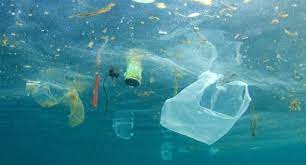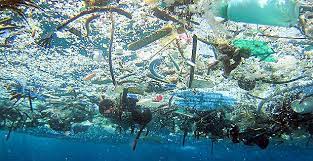Marine debris poses a grave threat to the health and vitality of our oceans, ecosystems, and the delicate balance of life within them. With increasing awareness of the detrimental effects of marine pollution, recycling has emerged as a pivotal solution in mitigating this global environmental crisis.
Recycling marine debris not only helps remove harmful waste from the ocean but also contributes to the conservation of resources and promotes sustainable practices.
This article highlights the importance of recycling marine debris as a crucial step towards safeguarding our planet’s marine environments and preserving a healthy and thriving ecosystem for future generations.
Products That Can Be Derived From Marine Debris

Marine debris, which refers to human-created waste that ends up in the oceans and other bodies of water, can be a significant environmental issue. However, there are several products that can be derived from marine debris through recycling and repurposing efforts. Here are some examples:
1. Recycled plastic products
Marine debris often includes various types of plastic waste, such as bottles, packaging materials, and fishing nets. These materials can be collected, sorted, and processed to create recycled plastic products like containers, furniture, clothing, and building materials.
2. Upcycled fashion items
Some companies specialize in transforming marine debris, particularly fishing nets and ropes, into fashionable clothing, accessories, and footwear. These products not only reduce waste but also raise awareness about the issue of marine pollution.
3. Art and jewelry
Artists and designers have found creative ways to incorporate marine debris into their artwork and jewelry. By collecting and repurposing materials like seashells, driftwood, and plastic fragments, they create unique and meaningful pieces that highlight the beauty and fragility of the oceans.
4. Eco-friendly packaging
Companies are developing innovative packaging solutions using recycled marine debris. For example, some packaging materials made from seaweed or biodegradable plastic derived from marine waste can serve as sustainable alternatives to traditional packaging.
5. Construction materials
Certain types of marine debris, such as plastic bottles and discarded fishing gear, can be transformed into construction materials. These materials can be used for various applications, including insulation, decking, and structural components, reducing the demand for virgin resources.
6. Energy generation
Some waste-to-energy technologies can convert certain types of marine debris, such as non-recyclable plastics, into energy. This process, known as waste-to-energy or waste-to-fuel, can generate electricity, heat, or biofuels.
7. Ocean-inspired home decor
Designers and artisans are utilizing marine debris to create unique home decor items. From lamps made with seashells and driftwood to wall art crafted from salvaged fishing nets, these products bring a touch of the ocean into people’s homes while raising awareness about the issue of marine pollution.
Read Also: How Does Oil Drilling Affect The Environment Ecosystem?
8. Educational materials
Marine debris can be transformed into educational materials, such as posters, interactive displays, and models. These materials help to educate and inform the public, particularly children, about the impact of marine debris on the environment, encouraging responsible behavior and fostering a sense of stewardship.
9. Recycled paper products
Fibrous materials found in marine debris, such as discarded paper and cardboard, can be processed and used to create recycled paper products. These can include notebooks, stationery, packaging materials, and even toilet paper, reducing the need for virgin tree pulp.
10. Filtration systems
Certain types of marine debris, like discarded fishing nets and plastic fragments, can be repurposed for water filtration systems. These materials can be incorporated into filters to remove contaminants and microplastics from water sources, contributing to cleaner water and mitigating the impact of marine pollution.
11. Environmental campaigns and awareness-raising products
Marine debris can serve as a powerful tool in environmental campaigns and initiatives. Promotional materials like T-shirts, tote bags, stickers, and posters made from recycled materials can be created to raise awareness, spread important messages, and support conservation efforts.
12. Recycled fishing gear
Discarded or damaged fishing gear, such as nets, lines, and buoys, can be collected and recycled to create new fishing equipment or other plastic products. Recycling fishing gear helps prevent it from becoming ghost gear, which continues to pose a threat to marine life even after being abandoned.
Read Also: Diesel Construction Driving Innovation and Infrastructure Development
13. Cleaning products
Some companies are developing cleaning products, such as detergents and soaps, using ingredients derived from marine debris. These eco-friendly products help to reduce waste and minimize the use of harmful chemicals, promoting a cleaner and healthier environment.
14. Marine-inspired jewelry and accessories
Craftsmen and jewelry designers are incorporating elements of marine debris, such as seaglass, shells, and coral fragments, into their creations. By transforming these materials into stunning jewelry and accessories, they highlight the beauty of the ocean while promoting sustainable fashion.
15. Recycled packaging materials
Marine debris, particularly plastic waste, can be processed into recycled packaging materials. These can include trays, containers, and protective packaging, providing a sustainable alternative to single-use plastics and reducing the environmental impact of packaging waste.
16. Ecotourism products
In areas affected by marine debris, local communities can repurpose the waste into ecotourism products. These can range from handmade crafts and souvenirs to guided tours that educate visitors about the issue of marine pollution and the efforts being made to combat it.
17. Marine habitat restoration
Some organizations are using marine debris, such as old tires and concrete blocks, to create artificial reefs and marine habitat restoration projects. These structures provide new habitats for marine life, promoting biodiversity and helping to revive ecosystems affected by pollution.
18. Sustainable fashion and textiles
Innovative companies are exploring ways to turn marine debris, particularly discarded fishing nets, into sustainable fabrics and textiles. These materials can be used to create clothing, swimwear, and accessories, reducing the reliance on conventional textile production and minimizing the environmental impact of the fashion industry.
19. Marine-inspired stationery and artwork
Artists and designers often find inspiration in the ocean and its marine life. By incorporating elements of marine debris into stationery items like notebooks, greeting cards, and art prints, they create unique and environmentally conscious products that raise awareness about the importance of ocean conservation.
20. Bio-based fuels
Some types of marine debris, such as algae and seaweed, can be processed to extract bio-based fuels like bioethanol and biodiesel. These renewable energy sources offer a more sustainable alternative to fossil fuels, reducing greenhouse gas emissions and dependency on non-renewable resources.
It’s important to note that while these products provide opportunities to reduce the impact of marine debris, the most effective solution is prevention. Efforts should focus on reducing plastic consumption, improving waste management systems, and promoting recycling and responsible disposal practices to prevent marine debris from entering the oceans in the first place.
These examples demonstrate the potential for transforming marine debris into valuable resources, while simultaneously addressing the pressing issue of ocean pollution.
However, it’s crucial to remember that prevention, reduction, and proper waste management remain the primary solutions to combat marine debris and protect our oceans for future generations.
These examples highlight the diverse range of products that can be derived from marine debris, showcasing the potential for innovation and sustainability. By repurposing and recycling these materials, we can contribute to the preservation of our oceans and promote a more circular economy.
Read Also: Essential Startup Marketing Resources

